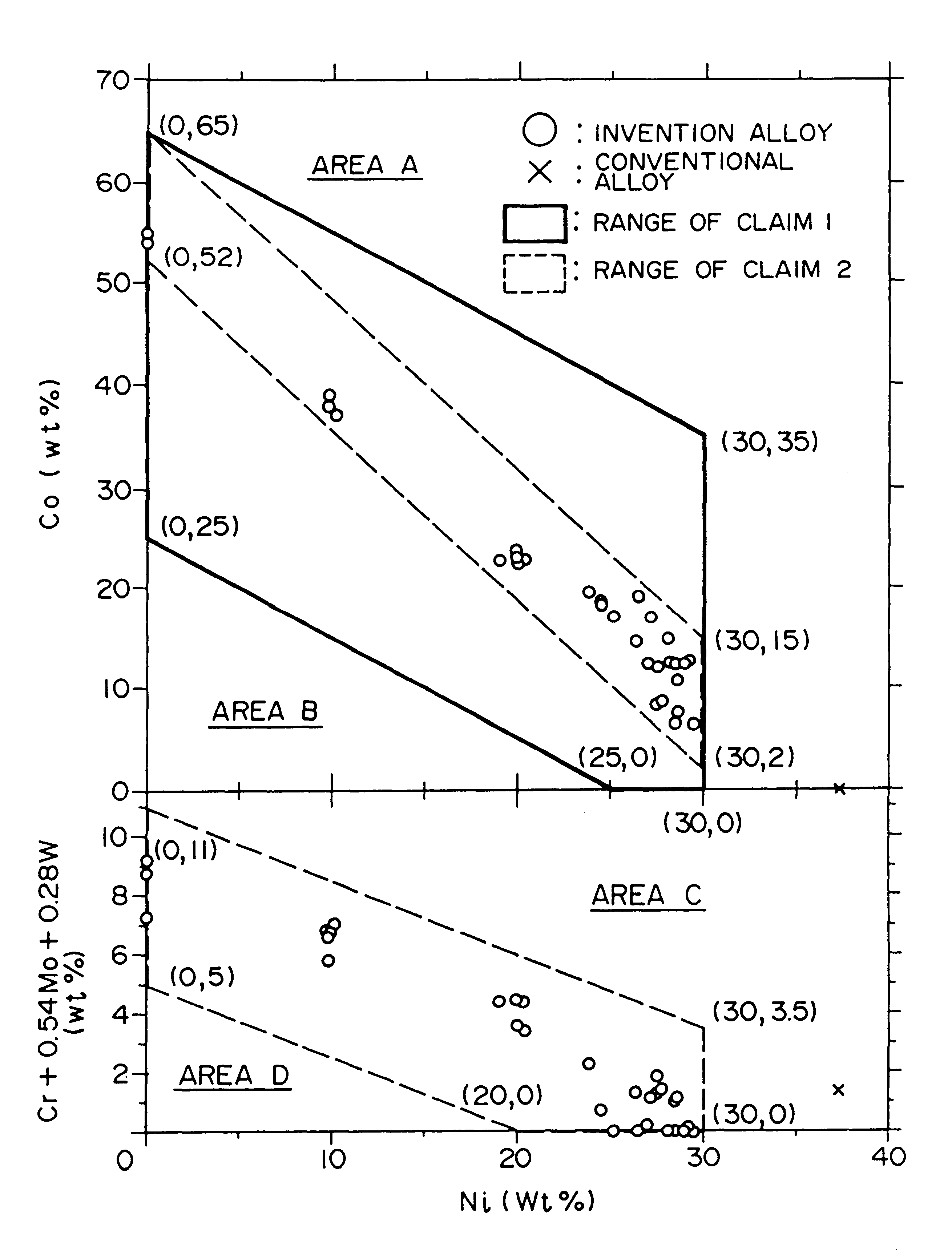High-strength and low-thermal-expansion alloy, wire of the alloy and method of manufacturing the alloy wire
a technology of high-strength and low-temperature expansion and alloy, which is applied in the direction of heat treatment process control, manufacturing tools, heat treatment apparatus, etc., can solve the problems of increasing the number of drawing passes, and unsuitable alloys for use, so as to achieve constant high torsional properties without complicated processes
- Summary
- Abstract
- Description
- Claims
- Application Information
AI Technical Summary
Benefits of technology
Problems solved by technology
Method used
Image
Examples
Embodiment Construction
Fe--Co--(Ni--(Cr+Mo+W)) system alloys having composition shown in Table 1 were melted into ingots, and the ingots were subjected to hot working to prepare round bars having diameter of 13.0 to 15.0 mm. Thereafter, or in the course of cold drawing after that, the bars were subjected to a heat treatment for controlling the transformation capacity in which they were maintained at various temperatures for one hour and then cooled by water. Facial scalping was conducted after this controlling heat treatment. Next, the bars were subjected to cold drawing to prepare coils having diameter of 4.9 to 2.5 mm at various reduction rates. Further, the coils were partially subjected to aging treatment in which they were maintained at various temperatures for two hours and then cooled in air. Various properties of the coils were evaluated. As to a wire of an alloy No. 8 alone, the controlling heat treatment was not conducted, and facial scalping was performed after hot working. Thereafter, the allo...
PUM
| Property | Measurement | Unit |
|---|---|---|
| tensile strength | aaaaa | aaaaa |
| surface roughness | aaaaa | aaaaa |
| tensile strength | aaaaa | aaaaa |
Abstract
Description
Claims
Application Information
 Login to View More
Login to View More - R&D
- Intellectual Property
- Life Sciences
- Materials
- Tech Scout
- Unparalleled Data Quality
- Higher Quality Content
- 60% Fewer Hallucinations
Browse by: Latest US Patents, China's latest patents, Technical Efficacy Thesaurus, Application Domain, Technology Topic, Popular Technical Reports.
© 2025 PatSnap. All rights reserved.Legal|Privacy policy|Modern Slavery Act Transparency Statement|Sitemap|About US| Contact US: help@patsnap.com


